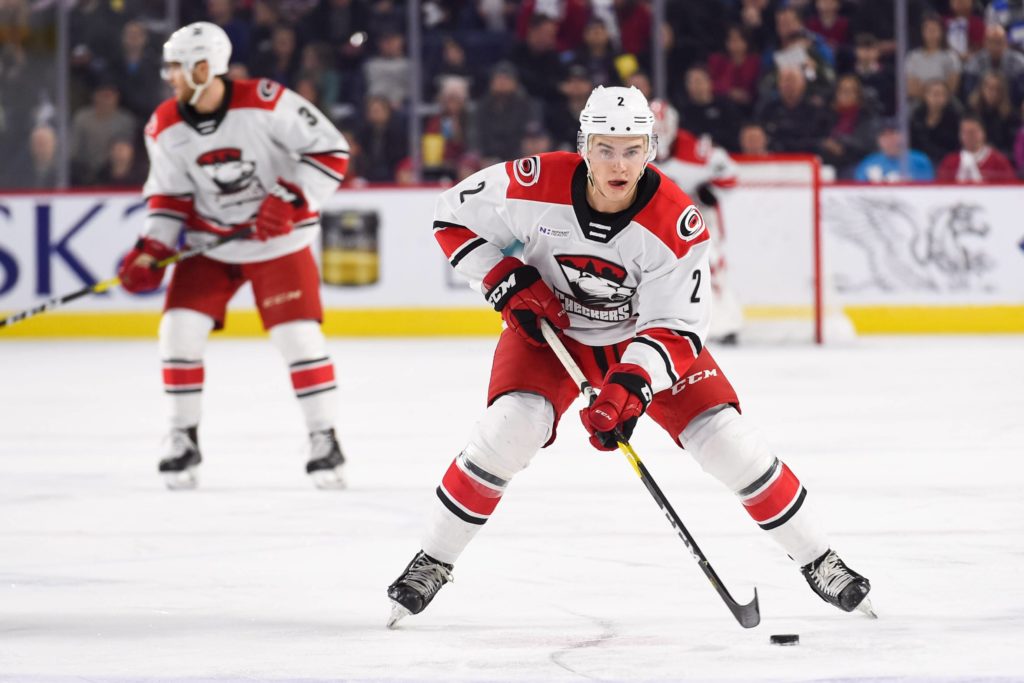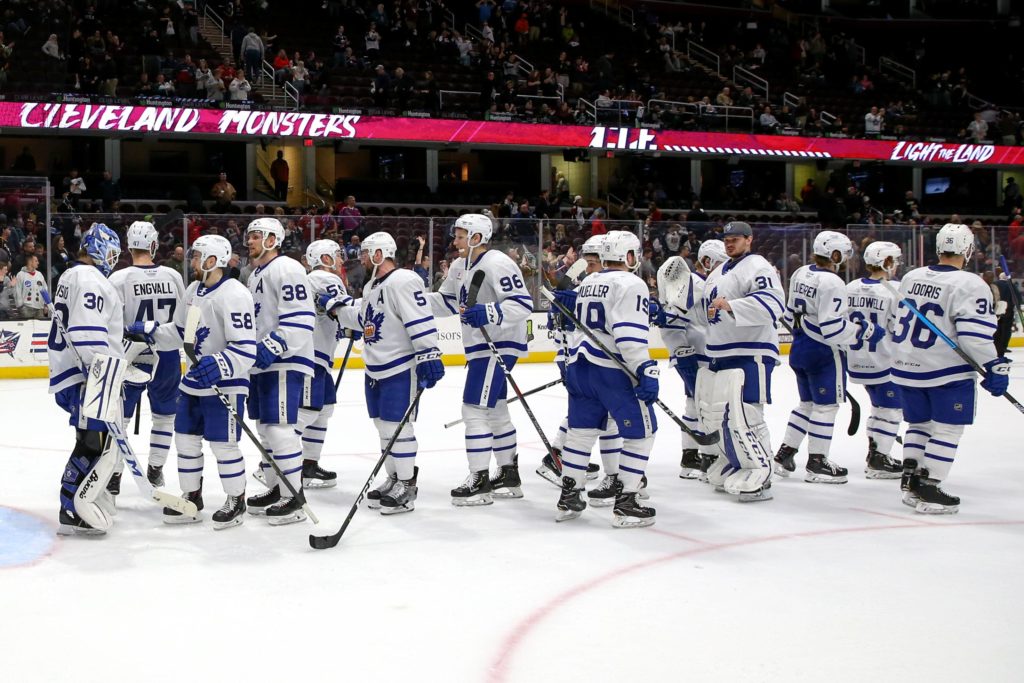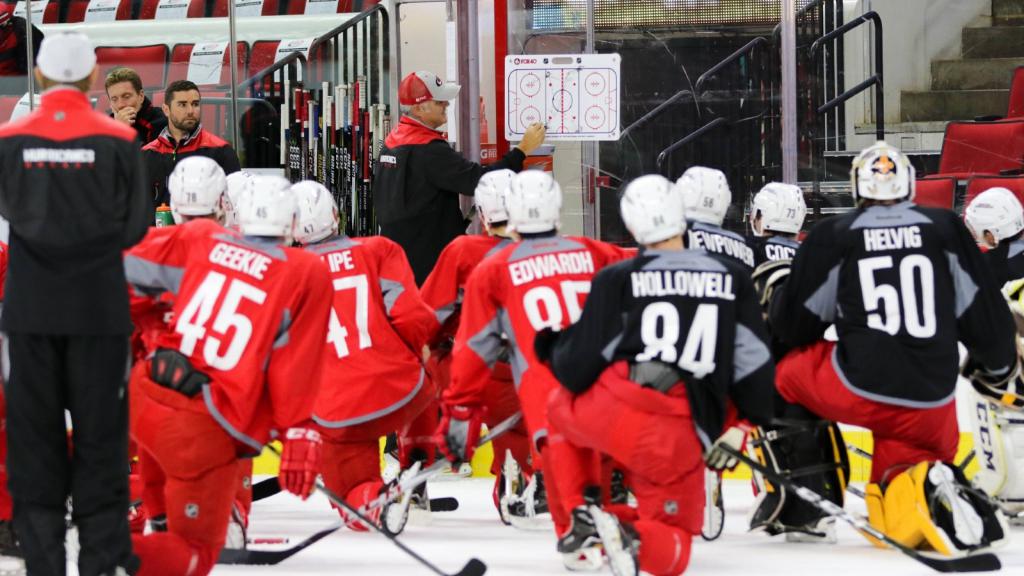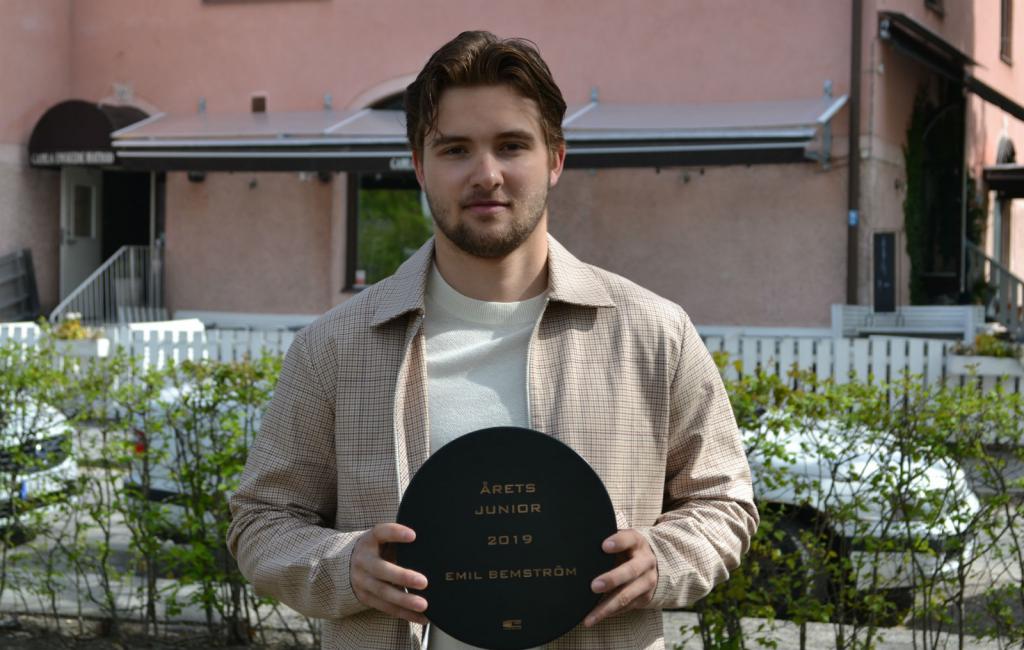
With two rounds of the Calder Cup Playoffs down and two more to go, the AHL could not have asked for a much more intriguing final four.
They have four clubs loaded with first-round picks and other top-tier prospects, plenty of those savvy vets that every Calder Cup contender must possess, and hot coaching candidates. Mix in some of the AHL’s top fan bases, a defending Calder Cup champion, and the final month of the postseason is looking good.
That defending Calder Cup champion, the Toronto Marlies (Toronto Maple Leafs), is the lone holdover from last season’s final four-team field. Rounding out the foursome are the regular-season champion Charlotte Checkers (Carolina Hurricanes) as well as a pair of Western Conference clubs, the Chicago Wolves (Vegas Golden Knights) and San Diego Gulls (Anaheim Ducks).
The Checkers’ 110 points topped the AHL in the regular season while the Wolves finished ahead of the Western Conference pack at 98 points. Both clubs will be up against opponents that finished third in their respective divisions in Toronto and San Diego. Those are not garden-variety third seeds, either. The Marlies swept the Rochester Americans (Buffalo Sabres), who finished third overall in the regular season, in the first round before taking out the Cleveland Monsters (Columbus Blue Jackets) in a second-round sweep. San Diego finished off the San Jose Barracuda (San Jose Sharks) and then dispatched the Bakersfield Condors (Edmonton Oilers), a club that had a 17-game winning streak en route to winning the Pacific Division in the regular season.
Each series starts on Friday night. Here is a preview of Charlotte-Toronto in the Eastern Conference Final with a look at Chicago-San Diego in the Western Conference Final to follow later this week.
CHARLOTTE CHECKERS (1) VS TORONTO MARLIES (3)
POST-SEASON HISTORY
This is a rare AHL playoff match-up of Hurricanes and Leafs affiliates. Back during the Carolina organization’s days as the Hartford Whalers, the Binghamton Whalers lost the 1982 Calder Cup Final to the New Brunswick Hawks. That year the Leafs shared New Brunswick with the Chicago Blackhawks. Leafs prospects took first-round AHL playoff series wins in 1986 and 2002.
This is Charlotte’s first trip to the third-round since 2011. Back during the organization’s days as the Hartford Whalers, the Springfield Indians won the Calder Cup in 1991. That championship came one year after their AHL affiliate had gone 11-60-9, setting league season records for fewest wins and points and most losses
Along with the Marlies’ Calder Cup run last season, they went to the third round in 2016 against the Hershey Bears, falling in five games. They are attempting to become the first repeat Calder Cup champion since Hershey did so in 2009 and 2010 and through to the third round for the fifth time in eight seasons.
CHARLOTTE CHECKERS

What is the plan of attack for a team tasked with facing this powerhouse Charlotte team?
Perhaps Toronto can find it after two high-quality clubs could not find any answers against Charlotte. In the first round, the Checkers handled the Providence Bruins in four games. Hershey, a club that had played .789 hockey in the second half before taking out the Bridgeport Sound Tigers in the first round, went out quietly against Charlotte in a sweep. The Checkers bombarded Hershey for 19 goals in four games, shut down the Bears on 16 of 18 power-play opportunities, and left one of the hardest-working clubs in the AHL unable to dictate nearly any play in the series.
Charlotte has done much of this damage without top defensemen Jake Bean and Haydn Fleury, who both remain on recall with Carolina. Top-end defenseman Trevor Carrick missed three games after a suspension for a Game 2 fracas with Providence while Bobby Sanguinetti sat for one game.
Even if an opponent can somehow impose its style on the Checkers for any sustained period, Charlotte is quite capable of adjusting to circumstances. They can play a skilled, puck-possession game and wear down opponents. Or they can play the transition game and rely on a quick-strike approach. Or they can grind down an opponent and play a size-oriented heavy game. The Checkers rank fourth in the AHL at an average weight of 208 pounds and sixth in height (6-foot-1), tops of any of the four remaining playoff clubs.
Head coach Mike Vellucci has gotten a full commitment to a two-way game from a roster filled with top prospects. While their skill can take care of much of the offensive side of the puck, Vellucci has them dialled-in to details away from the puck as well. Charlotte also utilizes an extremely aggressive and disruptive penalty kill that frustrates opponents.
Add it up, and the Checkers are second in goals-for (4.13 goals per game) and goals-against (2.00) through two rounds. In special teams play, Charlotte ranks third on both the power play and the penalty kill.
Alex Nedeljkovic is 6-1 | 2.00 | .916 in net, a reliable follow-through to a regular season in which he was an AHL First All-Star Team member and Aldege “Baz” Bastien Memorial Award winner as the AHL’s outstanding goaltender. Behind him is Dustin Tokarski, whose big-game experience includes playoff appearances with the Montreal Canadiens, a Calder Cup in 2012 with the Norfolk Admirals, and a gold-medal performance for Canada at the World Junior Championship.
Charlotte can deploy one of the top forward groups in the AHL. Andrew Poturalski is tied for the playoff scoring lead at 13 points (5-8-13). Aleksi Saarela exploded for five goals in the final two games of the Hershey series, giving him 6-4-10. Morgan Geekie owns the AHL rookie scoring lead at 5-5-10. Julien Gauthier (4-1-5) and Niclas Roy (0-7-7) bring mobile heft to the playoff grind. Tomas Jurco is 4-3-7 while 2017 12th overall pick Martin Necas is handling the playoff grind at 2-3-5 so far.
For Sanguinetti, there is hockey life after 30, and he has recharged his career since joining the Checkers around mid-season; his 1-6-7 point spread places him second in scoring for AHL blueliners.
Behind all of that point production, the Checkers can smother opponents as well. They are holding their opposition to 24.3 shots per game, second-best in the AHL postseason.
Vellucci’s club has not seen the Marlies since a two-game series in Charlotte back in January. The Marlies took both games, including a 5-0 rout in the second game.
After that 5-0 loss, Vellucci told the Charlotte team website, “We just got schooled by the champions. If you want to be the champion, you’ve got to beat them. We didn’t play good enough against them, and they schooled us.”
The four months since then have relieved that sting for Vellucci, but he will have his players prepared to compete against a championship-calibre opponent. Toronto took three of the four match-ups in the regular season.
“We have to be ready for them,” Vellucci said.
TORONTO MARLIES

Off the ice, the Toronto front office made “Back For More” the theme of this season’s marketing plan.
On the ice, Toronto players are putting that slogan into practice. No blemishes yet for the Marlies, who are 7-0 in the postseason. Head coach Sheldon Keefe’s roster features 12 returnees from the 2018 championship club.
A big question for Keefe will be the ongoing status of elite-level defenseman Calle Rosen, who was injured early in Game 1 against Cleveland after a fall into the end boards. Rosen produced 7-39-46 in 54 regular-season appearances for the Marlies and had a key role in last season’s championship run as well.
“I would say day-to-day,” Keefe told the Toronto media on Monday. “Obviously, Rosen’s not practicing with the team here quite yet, so he’s a ways away.”
For the Marlies, their efficiency in the opening two rounds at least has minimized the games that Rosen has missed. Quickly sweeping Cleveland earned them a 10-day break between the second and third rounds, and they already had a week between series after eliminating Rochester. Last year Toronto had similar breaks after back-to-back sweeps against the Syracuse Crunch and Lehigh Valley Phantoms. That extra time may have proven useful as well, given that their Calder Cup Final against the Texas Stars stretched seven hard-fought games.
That downtime can be either a blessing or a detriment to a team, depending on how it is managed. Keefe is attempting to balance the need to stay sharp and in game condition with the extra opportunity to practice, heal nagging injuries, and game-plan for Charlotte.
“We think we’ve found a good balance of managing that, both with time off and modifying things here and there,” Keefe told the Toronto media on Monday. “But the other piece is you just really have to embrace this time of year. Those are the types of things that do weigh on you, but those are the mental blocks you have to get over. The teams that get over them are the teams that I really think get to play a long time at this time of year.”
Much like last spring, the Marlies have been stingy, limiting Rochester and Cleveland to a combined 1.57 goals per game in the two series.
After an opportunity to seize the number-one playoff job opened, goaltender Kasimir Kaskisuo grabbed it. The 25-year-old will face his biggest test yet against Charlotte, but so far he is 7-0 | 1.56 | .949. Veteran Michael Hutchinson, whose recall to the Leafs in April brought that opportunity for Kaskisuo, is on hand on hand as well. His midseason arrival from the Springfield Thunderbirds helped to settle down the Marlies’ goaltending picture, and he finished 16-8-5 | 2.85 | .909. As a Winnipeg Jets prospect, he went to the Calder Cup Final in 2014.
The back end has solidified after regular-season injuries repeatedly disrupted it. Nineteen-year-old rookie Rasmus Sandin already has seven playoff assists and is looking like a steal for the Leafs, who chose him 29th in the 2018 NHL Draft. Another Leafs first-rounder, Timothy Liljegren, has had an opportunity for another extended playoff run after skating in 20 postseason games last year. The 2017 NHL Draft’s 17th overall pick could have two Calder Cup championships to his name at age 20 if this year’s club can repeat. Vincent LoVerde already does have his name engraved twice on the Calder Cup after winning it last year and during his time in the Los Angeles Kings organization in 2015. There is also Andreas Borgman while rookies Joseph Duszak and Mac Hollowell are handling the upgrade to playoff hockey.
While this year’s club may lack a bit of the high-end offensive potency that the 2018 Marlies deployed, they still rank third in the AHL postseason at 3.86 goals per game. A top-ranked power play that has clicked at 39.1 percent so far has supplied a third of Toronto’s goal production. That reliance is offset by reasonably balanced scoring up front – 10 Marlies forwards have at least one goal (Chicago and San Diego each have 12 forwards who have scored while the Checkers have nine forwards in the goal column).
Tenacious forward Trevor Moore has built himself an AHL playoff reputation. Keefe welcomed him back into the line-up after Moore’s first-round stint with the Leafs ended. Against Cleveland, he produced 4-2-6. Veteran Chris Mueller continues to churn out goal after goal after hitting 33 in 60 regular-season games. He has five tallies in seven games as does Adam Brooks. Jeremy Bracco, who finished second in regular-season AHL scoring is at 2-9-11 through seven playoff contests after limited postseason time last year.
The Marlies are faced with the challenge of playing the first two games in Charlotte, but they have shown a comfort level on the road. After tying the Wolves for second overall with 23 regular-season road victories, they are 4-0 on the road in playoff action.


